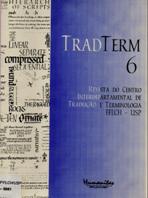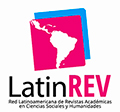The manifestation of translation and the ‘double bind’: the writing of Jacques Derrida and his translations
DOI:
https://doi.org/10.11606/issn.2317-9511.tradterm.2000.49517Keywords:
Manifestation of translation, deconstruction, double bind, Derrida.Abstract
The manifestation of translation and the ‘double bind’: the writing of Jacques Derrida and his translations. — The deconstruction proposed by Jacques Derrida allows us to see translation as a distinct language event. This dimension calls for a reflection on the distinction between the so-called mother tongue and the foreign language; we assume that, based on this difference, the translator’s language takes on a new role as a means to transform and produce meaning in the language into which the text is being translated. Such a language event creates a kind of ‘manifestation of translation’. My main purpose in this article is to reflect upon the rapport between the languages involved in the translation process through ‘double bind’. In order to learn how translators use deconstruction to explain and justify their translations, this article analyses the prefaces, afterwords and translator’s notes of English versions of some of Derrida’s texts. The underlying hypothesis of these considerations is the existence of ‘reciprocal translation’ between Jacques Derrida’s language — French — and the translator’s language — English.Downloads
Download data is not yet available.
Downloads
Published
2000-12-18
Issue
Section
Translation
License
Autores que publicam nesta revista concordam com os seguintes termos:
- Autores mantém os direitos autorais e concedem à revista o direito de primeira publicação, com o trabalho simultaneamente licenciado sob a Licença Creative Commons Attribution BY-NC-SA que permite o compartilhamento do trabalho com reconhecimento da autoria e publicação inicial nesta revista.
- Autores têm autorização para assumir contratos adicionais separadamente, para distribuição não-exclusiva da versão do trabalho publicada nesta revista (ex.: publicar em repositório institucional ou como capítulo de livro), com reconhecimento de autoria e publicação inicial nesta revista.
- Autores têm permissão e são estimulados a publicar e distribuir seu trabalho online (ex.: em repositórios institucionais ou na sua página pessoal) a qualquer ponto antes ou durante o processo editorial, já que isso pode gerar alterações produtivas, bem como aumentar o impacto e a citação do trabalho publicado (Veja O Efeito do Acesso Livre).
How to Cite
Ottoni, P. (2000). The manifestation of translation and the ‘double bind’: the writing of Jacques Derrida and his translations. TradTerm, 6, 125-141. https://doi.org/10.11606/issn.2317-9511.tradterm.2000.49517








